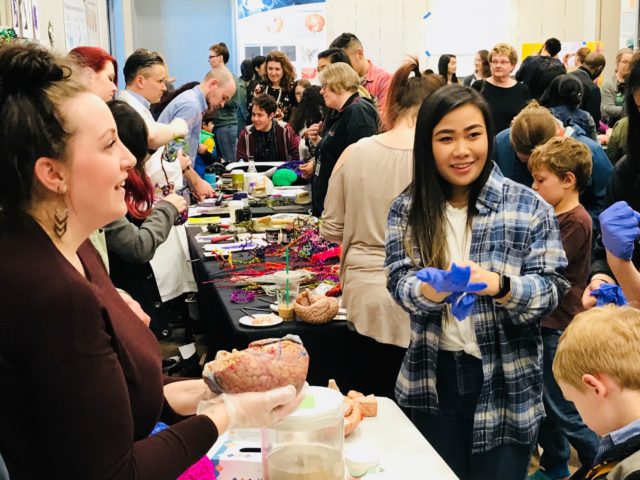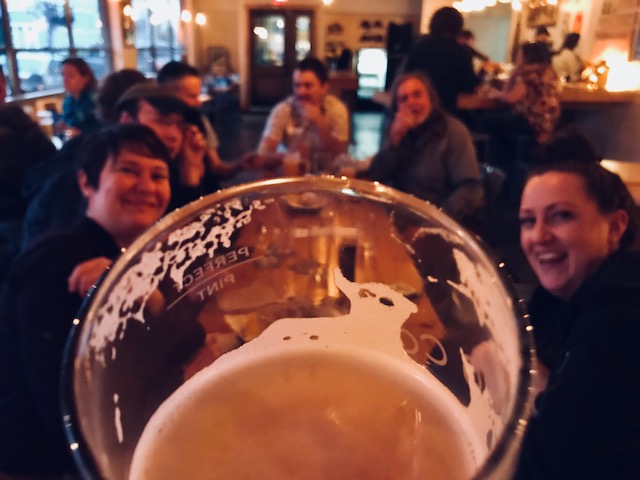We enthusiastically returned to one of the nation’s largest Brain Fairs on Saturday at the Oregon Museum of Science & Industry (OMSI) to continue our vigorous efforts at brain awareness with THREE long tables piled high with pipe cleaners, jars of ink, sketch pads, electrodes, Mindflex Duels, formalin-fixed human and other animal cerebrums – and almost 30 informed and eager Noggin volunteers!
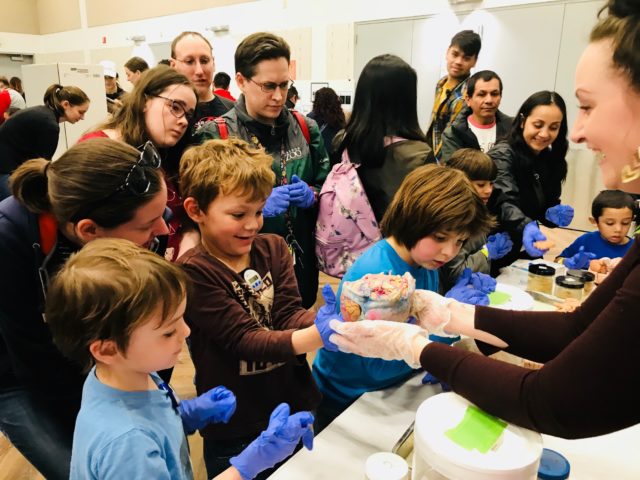
LEARN MORE: Pipe Cleaners, Gel Prints, Electrodes & Brains!
LEARN MORE: Thalamic Thunder @ OMSI
LEARN MORE: A full day of brains at OMSI
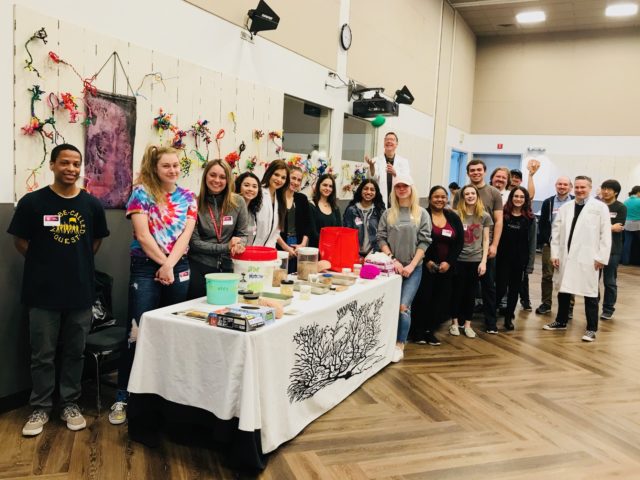

We welcomed a HUGE contingent from Portland State University committed to the campus motto “Let Knowledge Serve the City,” including Jordan Ray, Jennifer Teachworth, Michael Deveney, Mikey Smith, Adam Bishop, Travis Christian, Shawna Erickson, Ankita Guchait, Krystal Harrel, Mara Baker, Kyle Stinson, Vanessa Batulayan, Thomas Madison, Lyubov Bachinskaya, Micheal Bettinger, Bliss Croton, Nancy Yang, plus Mckenzie Figueracion, Sulema Rodriguez and Heather Hamilton, NIH BUILD EXITO scholars at PSU…
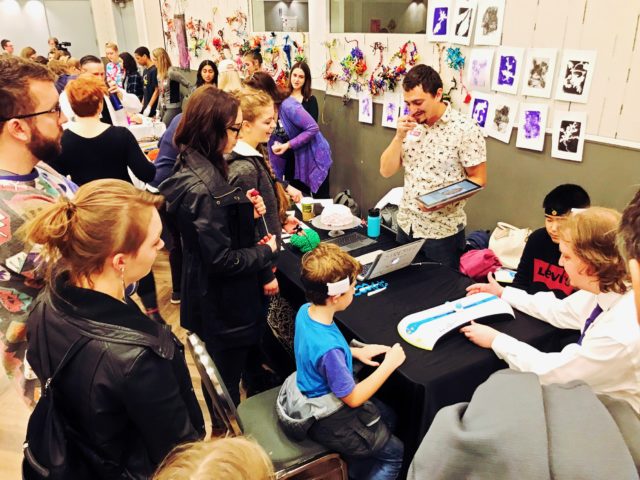
LEARN MORE: Michael Deveney: Little hands holding brains
LEARN MORE: Lyubov Bachinskaya: Wait – what’s a neuron?
We also valued our accomplished outreach participants from suburban Washington State University, among them Jeehoon Jung, Iris Gutierrez, Gavin Lockard, Alivia Stone, Malia’Ka Hall, Sukh Athwal, Katerina Bondarenko and Noggin Resource Council member Ruth Marigomen.

And we were joined by Brain Board member Kindra Crick, and her expert neuroscientist daughter Cora!

Noggin most definitely put the “brains” in Brain Fair!
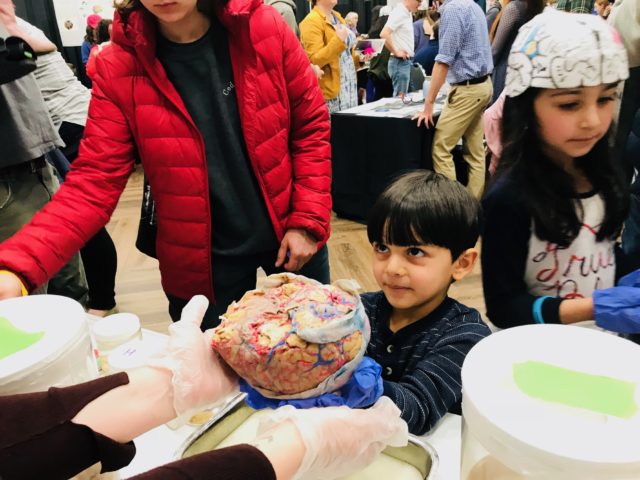
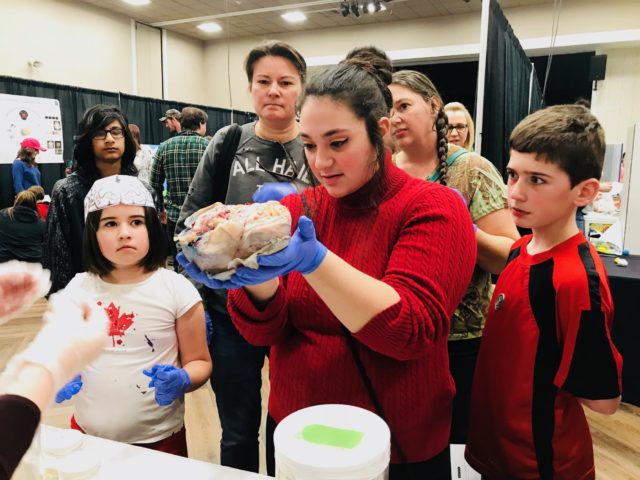
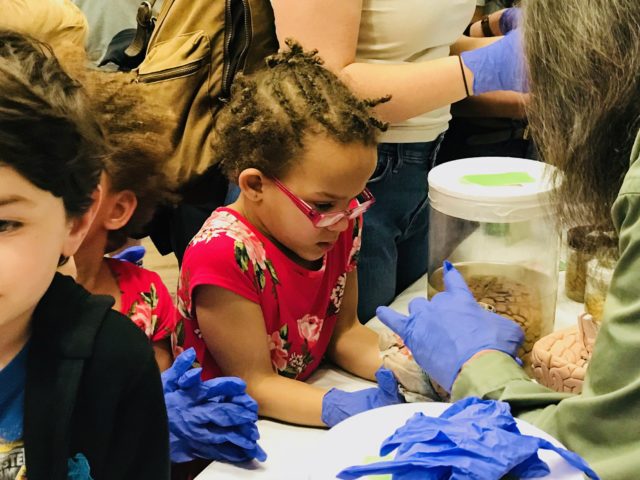



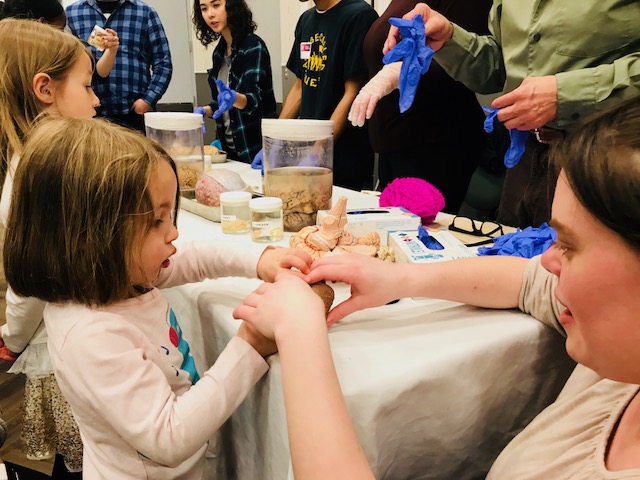





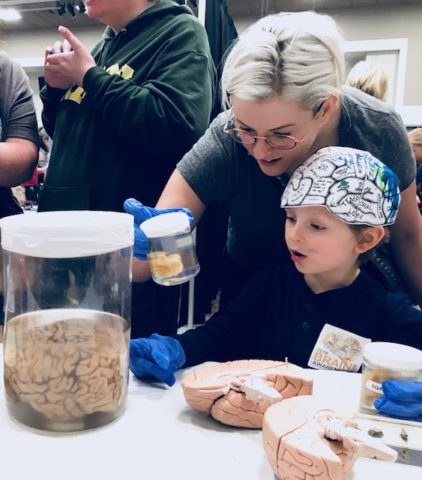
We are particularly indebted to Mark Rutledge-Gorman of the Portland Alcohol Research Center (PARC) at OHSU, who ordered crates of sparkly pipe cleaners and many essential boxes of brain-wrangling nitrile gloves. In fact, during a busy day of public engagement, we used EIGHTEEN BOXES (100 in each!) – that means NINE HUNDRED PEOPLE held our human brains from 10am – 5pm on Saturday, March 10th!

Volunteers Michael Deveney & Mikey Smith from PSU & Iris Gutierrez from WSU talk about all the questions they had at the Noggin brain table. How many neurons do we lose between birth and age 21..?!
And of course we made art!

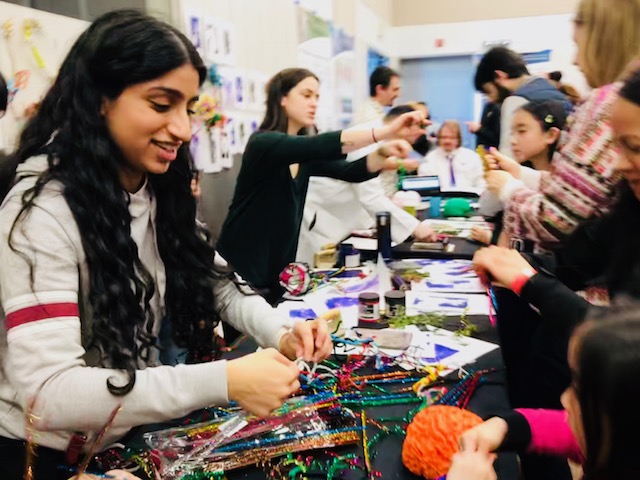

Art & science in action: Noggin volunteer Kyle Stinson from PSU talks about his pipe cleaner bipolar cell…
Noggin volunteer Alivia Stone from WSU explains spinal reflex physiology – using pipe cleaners!
Noggin volunteers Mara Baker & McKenzie Figuracion from Portland State University explain their pipe cleaner neurons, including a pseudo-unipolar cell, and a cone photoreceptor…
OMSI visitors also rolled ink across carefully arranged plant material on our reusable gels, to make some striking neuron-inspired prints…
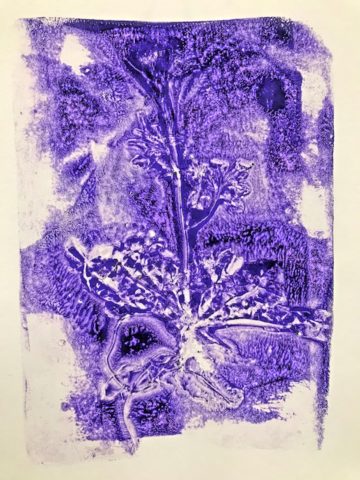


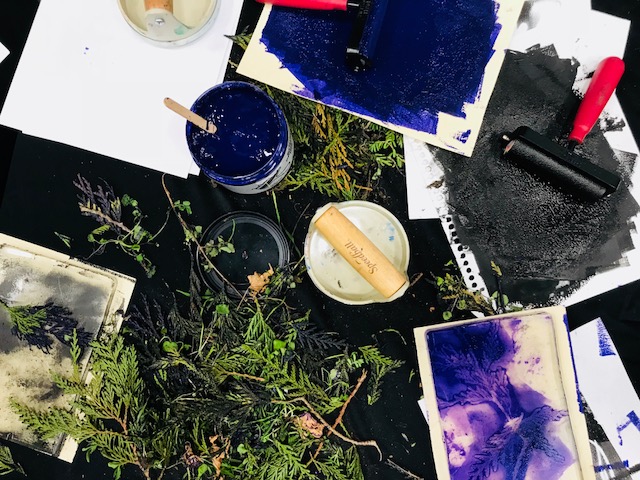
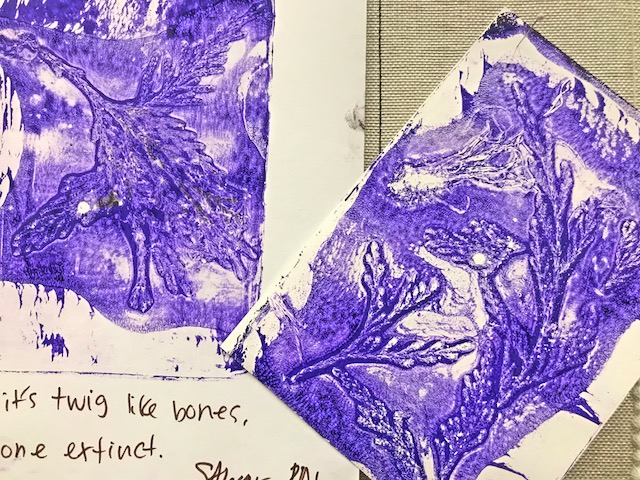
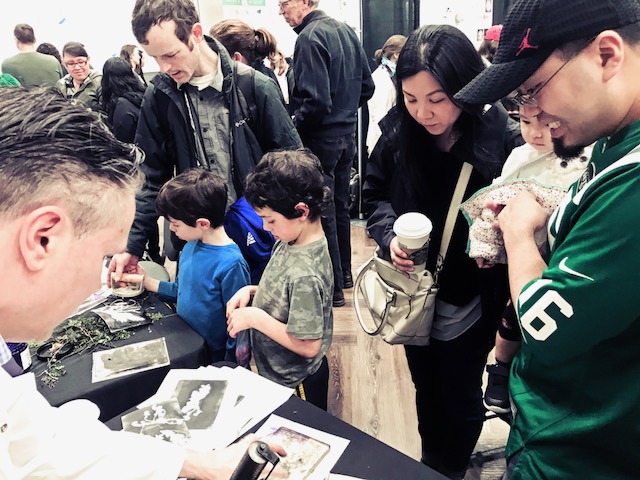


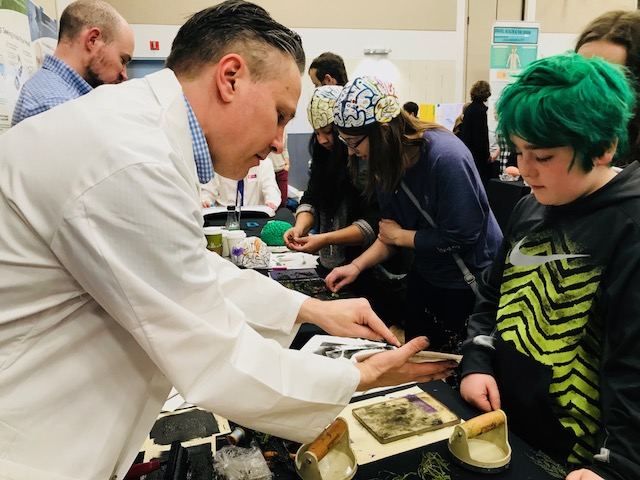
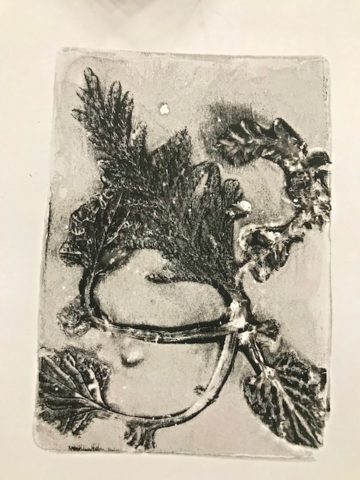
We developed quite the neuroscience-inspired art gallery as the day progressed!
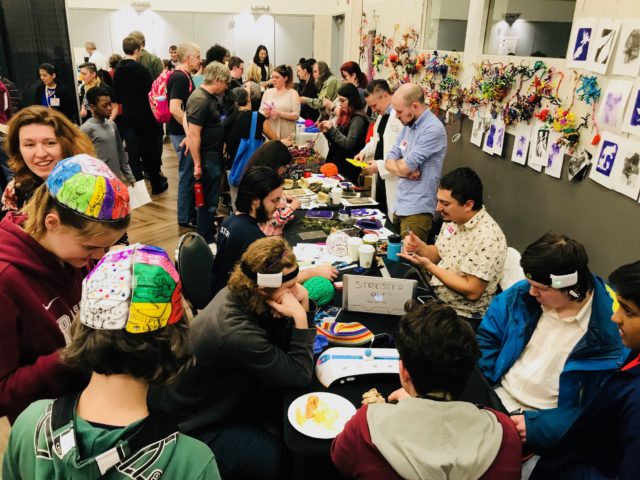






Katerina Bondarenko from WSU (who also arranged travel support for a WSU participant in Noggin outreach on Capitol Hill last fall after that campus prioritized football and higher administrative salaries over instruction, community engagement and the arts) not only delivered custom lab coats courtesy of her employer, the medical scrubs and uniform supplier Allheart…

But she also brought along a home-baked BRAIN CAKE!

And we were ready for #brainfood! Last year sandwiches were available for volunteers, but Noggin Coordinators stepped up to donate emergency pizzas from Sparky’s, which (thankfully!) delivered!
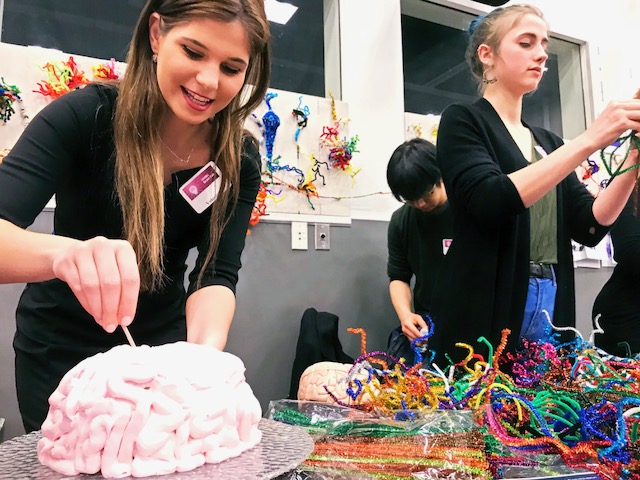
(The Sparky’s driver also loved the opportunity to hold a brain!)

Pizza fueled the afternoon at OMSI, and volunteers Jordan Ray and Micheal Bettinger from PSU ran a popular electrophysiology table, with multiple ways to demonstrate the electrical nature of information flow in the brain…

From Jordan: “I ran the electrophysiology side of the Noggin booth and had a bunch of fun testing autonomic response with my home-built galvanic skin response (GSR) device. Participants had a great time comparing their sympathetic responses to deep breathing, pinches on the skin, and the occasional scare from their friends. I got asked a lot of questions about stress, the autonomic nervous system (ANS), and evolutionary origins of the fight-or-flight response. Additionally, I got a lot of questions about my Arduino GSR build and had a few great connections with kids who want to build their own set up with Arduino at home. Overall, the brain fair was a huge win for STEM in the community and it was yet another inspiring event; seeing all the young thinkers interested in neuroscience gives me a lot of hope for our future science community here in Portland!”



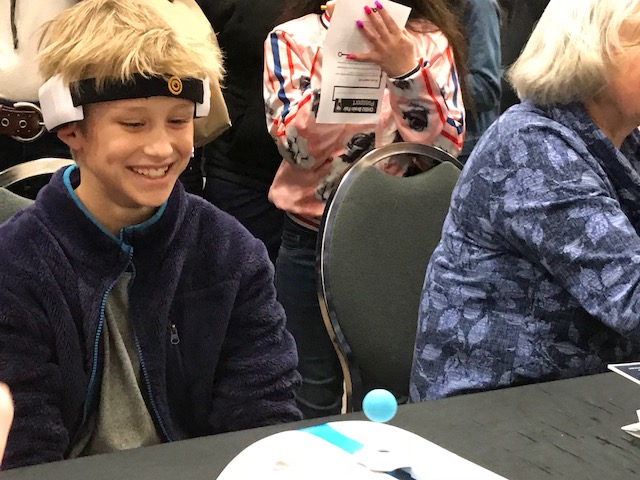


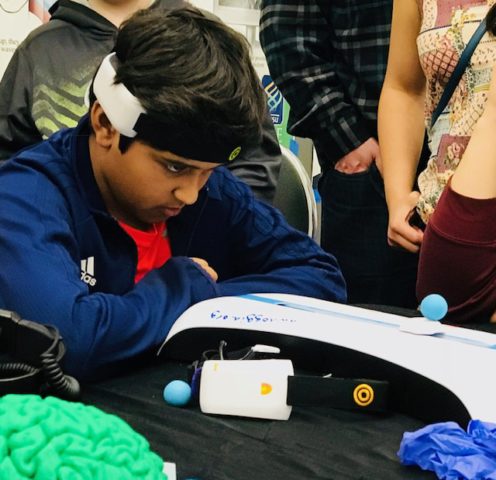
Thanks to Kate Stout of the Oregon Brain Institute for organizing the Fair! And many, many thanks to our exceptional, hardworking Noggin outreach volunteers, who help make the Pacific Northwest an arts-integrated neuroscience powerhouse for public awareness of brain research – and brains!
